By Jes Mason, Heidi Lee, Thea Gribilas and Sarah Tomlinson
Photos by Jes Mason
Content warning: This article includes accounts from residential school survivors and references to violence against Indigenous children.
The Egerton Ryerson statue was taken down, vandalized and beheaded by protesters at the “X University” sit-in on Sunday.
Videos posted to social media show a rope tied to the head of the statue and it being forcibly pulled down from its pedestal.
The statue’s destruction comes after years of calls for the statue to be removed from campus and for Ryerson University to be renamed, due to Egerton Ryerson’s involvement in creating Canada’s residential school system.
The debate around the statue and renaming Ryerson was amplified after the remains of 215 children were found at the former Kamloops Indian Residential School at the end of May.
Last week, children’s shoes were placed at the foot of the statue to commemorate the lives of the 215 children found. The statue was also painted with phrases such as “racist,” “215” and “shame.”
After the statue fell, protesters took turns writing phrases like “murderer” and “go to hell” at the base of the statue.
One protester climbed up on the pedestal where the statue previously stood and held up the Karoniaktajeh Louis Hall unity flag, which was created in 1974.
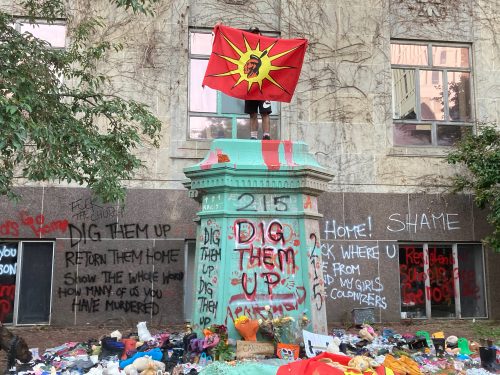
The face of the statue was also covered by a unity flag, with a pair of red shoes placed on top of it.
According to CBC, Indigenous Peoples began using the flag to resist colonial oppression after the Oka Crisis of 1990; a 78-day standoff between Mohawk protestors, Quebec police, the Canadian Armed Forces and the RCMP.
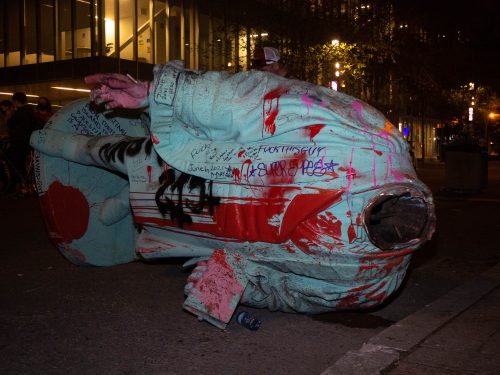
Hours later, near midnight on Monday, the statue was beheaded using power tools. A small group of protesters marched to Harbourfront with the statue’s head, where they shared experiences of colonial violence and held a ceremony that featured smudging, singing and drumming.
Protestors then tied a rope through the head, dropped it into the lake to “cleanse” it and retrieved it from the water. They said they intended to take the head to 1492 Land Back Lane.
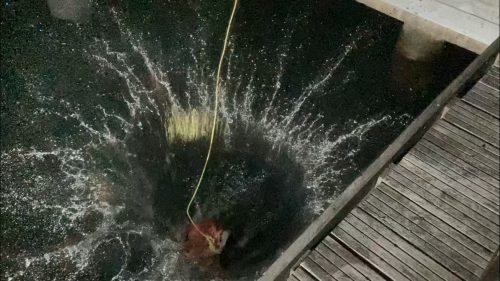
In a statement posted to Ryerson Today, university president Mohamed Lachemi said “the statue will not be restored or replaced.”
“We are relieved no one was injured in the process,” Lachemi said in the statement.
“Our community holds diverse views on many topics, including the name of our institution,” it reads. “At our core, this is what universities are all about: we are a place where difficult subjects are discussed, attitudes are challenged, and alternatives are suggested and considered.”
Toronto Police Service (TPS) tweeted yesterday that they “cannot tolerate acts of vandalism/violence,” and that “officers will be on site to ensure the safety of everyone involved and will investigate/enforce as necessary.”
In an email to The Eye, a spokesperson said TPS is currently investigating the toppling of the statue.
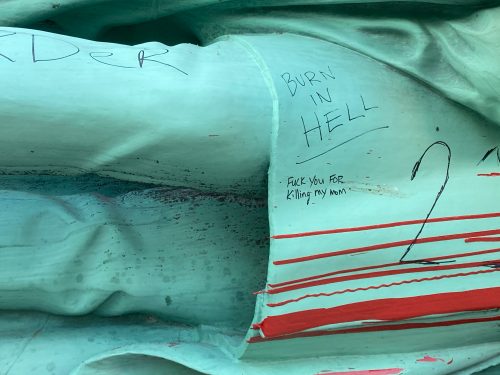
Another sit-in was held at the Ryerson statue on May 31. A protester named Walks with the Spirit Woman said on Sunday that they had been at the sit-in for four days and four nights.
They said that not only have they been living with intergenerational trauma and grew up in the child welfare system, their grandmother was a residential school survivor. In addition, they said their own children were taken away from them.
Indigenous children are overrepresented in the child welfare system. According to the Ontario Human Rights Commission, “this severe disproportionality is a continuation of Canada’s colonial past.”
“With the help of the warriors, the children, the spirits and the elders that are here, I am able to overcome all that,” said Walks with the Spirit Woman.
Craig, who is Métis and has a family member who attended a residential school, said seeing the statue taken down is “a weight off the shoulder.”
“I am going to stand with my Black Lives Matter friends on this and say, if they are rewriting history to where it should be, this needs to happen,” said Craig, who requested to be identified by only his first name.
March to the statue
Prior to the toppling of the Ryerson statue, hundreds of Indigenous and non-Indigenous people marched downtown from the Ontario legislature at Queen’s Park to Egerton Ryerson’s statue to commemorate the 215 children found at the Kamloops Residential School.
The crowd stopped at Yonge-Dundas Square for performances by dancers and drummers. At the statue, speeches were followed by more singing and dancing, as well as a closing ceremony.
Emily Gaudet Dick, who identifies as Mushkegowuk Cree and Anishinaabe Kwe, was a speaker at the march. As a daughter of residential school survivors, she said she wasn’t surprised by the mass grave site of Indigenous children found in B.C.
“I was saddened, angered. But of all those emotions, there was no shock, no surprise. We’ve learnt these experiences through our elders our whole lives. It’s a sad time,” she said.
Jimmy Dick is Moose Cree First Nation from the community of Moose Factory, Ont., located in James Bay in the Nishnawbe-Aski Nation.
“I was saddened, angered. But of all those emotions, there was no shock, no surprise. We’ve learnt these experiences through our elders our whole lives”
At the opening ceremony of Sunday’s sit-in, he spoke about his family’s experience in residential schools.
“Growing up, all my family, all my siblings were put in residential schools—all six of us. My mother and father couldn’t do anything. This is what we lived with. That’s a war crime. We’re like war veterans,” he said.
Crystal Sinclair is from Fisher River Cree Nation in Manitoba. She is a survivor of the Poplar Hill Residential School in northern Ontario, which she attended from 1977 to 1978.
“I didn’t understand what was going on. I just knew I was displaced,” said Sinclair.
With more graves to be uncovered from sites of residential schools, she said it’s no longer justifiable for the government to turn a “blind eye” to the harm that residential schools caused.
“Pressure your government…we will not accept it anymore because now we rise,” she said.
A National Indian Residential School Crisis Line to support residential school survivors and those affected has been set up. You can reach the 24-hour national crisis line at 1-866-925-4419.


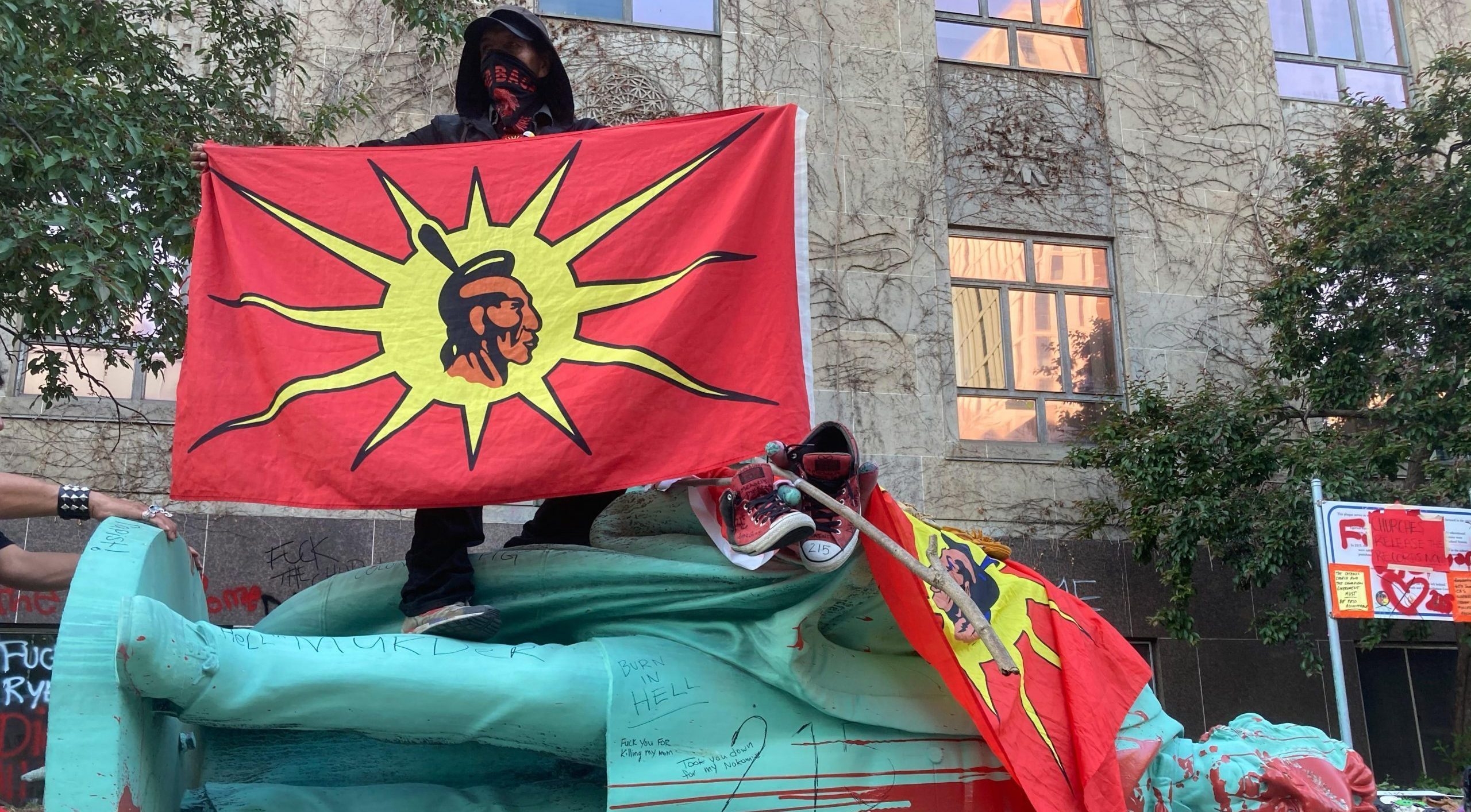








M
I think it’s also important to look at things in more detail and context. If you’re interested in learning more about Egerton and the motives and reasoning behind the residential schools–I suggest taking the time to read this article:
https://nationalpost.com/opinion/opinion-egerton-ryerson-has-been-falsely-accused-of-trying-to-erase-indigenous-culture